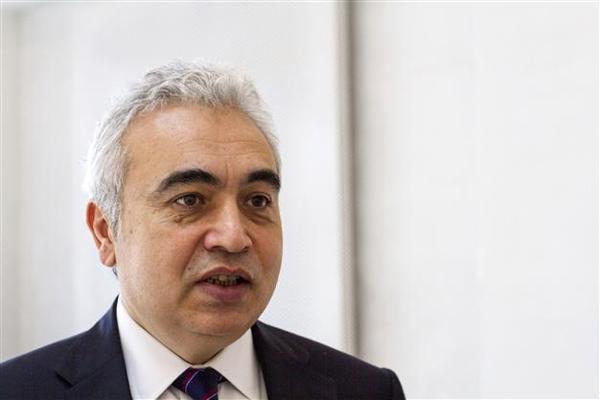IEA’s Birol says Middle East militancy poses ‘major challenge’ for oil
TOKYO-Reuters


AA Photo
The rise of the Islamic State of Iraq and the Levant (ISIL) in Iraq and Syria presents a major challenge for the investment necessary to prevent an oil shortage in the next decade, the International Energy Agency’s (IEA’s) top economist said Feb. 17.While the IEA has sounded warnings that Middle East crude production will need to rise in the 2020s to meet predicted demand, Chief Economist Fatih Birol said there remain “myopic” views about the need for investment at a time when the fall in oil prices means energy companies are slashing new drilling.
U.S. oil output from shale formations, while expected to rise in the short term even with the cutbacks in drilling and investment, will not be enough to meet demand. The traditional Middle East producers will need to meet the expected rise in consumption, Birol said, with Iraq expected to contribute about 50 percent of the additional oil needed.
That means “we now have a problem,” Birol said, speaking to Japan’s gas industry association four days after the IEA confirmed his appointment to replace Maria van der Hoeven as executive director when her term expires at the end of August.
“The security problems caused by ISIL and others are creating a major challenge for the new investments in the Middle East and if those investments are not made today we will not see that badly needed production growth around the 2020s,” Birol said.
“The appetite for investments in the Middle East is close to zero, mainly as a result of the unpredictability of the region,” he said.
ISIL extremists have disrupted oil production in northern Iraq, although output in the south, where most of the country’s crude comes from, has so far been largely unaffected.
Still, attacks by Islamist groups with suspected ties to ISIL are spreading, including to an oilfield in Libya in which France’s Total has a stake.
Oil prices have rallied to around $62 a barrel from a six-year trough below $46 in mid-January, mostly on worries about falling rig counts in the United States and the outlook for future shale oil production.
Still, U.S. crude inventories have continued to swell because of production already in place, with the stocks rising to a record high of nearly 418 million barrels in the week to Feb. 6, government data showed last week.
